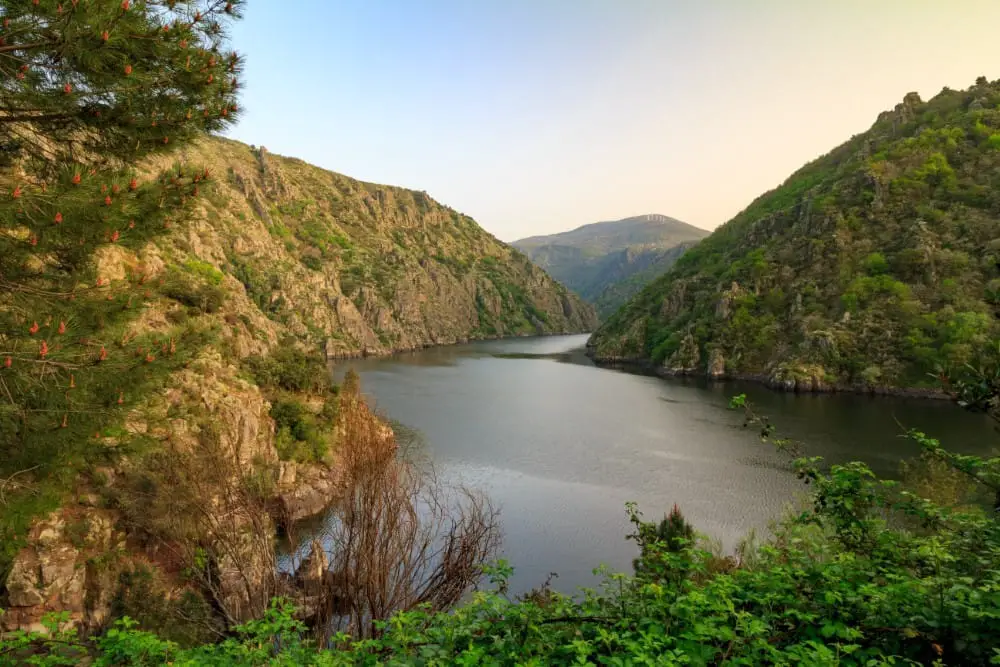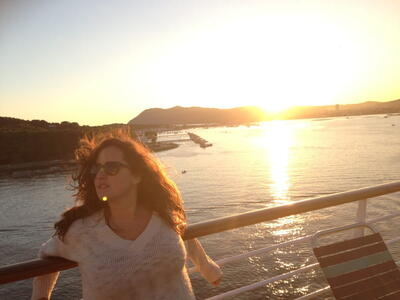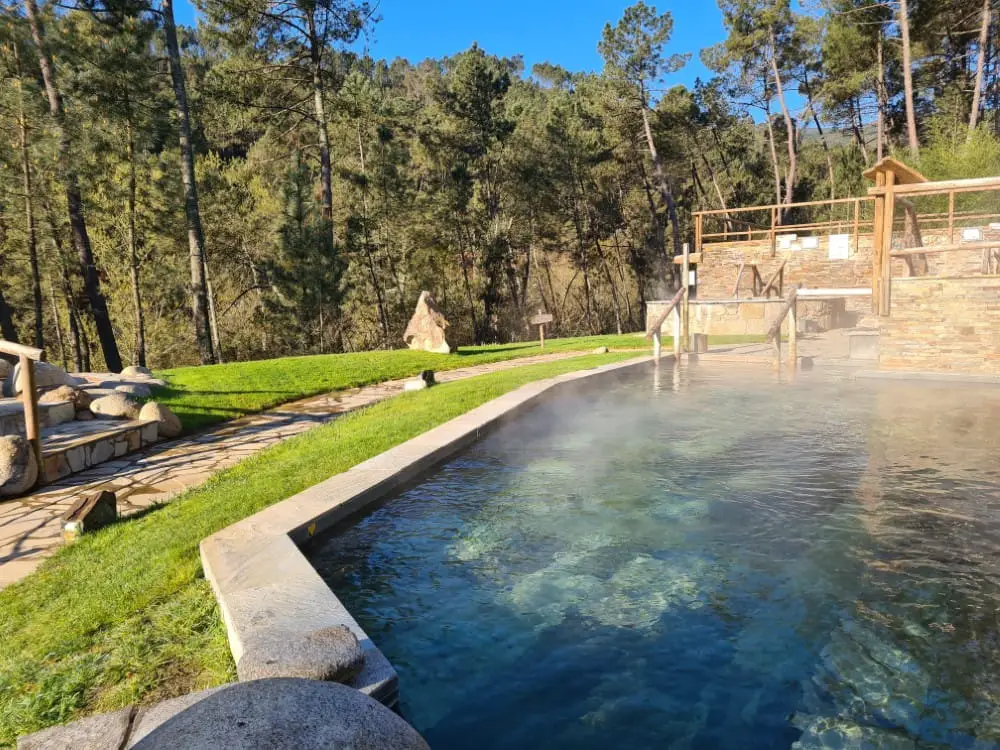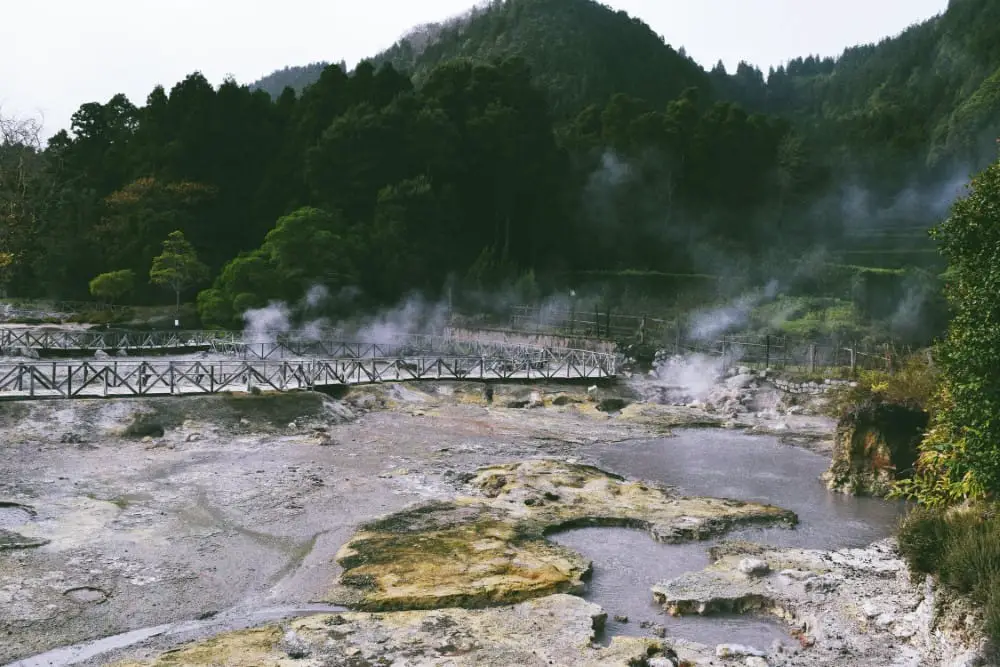
Under the name "Raia Termal; 1 destination, 2 countries" (or Racha Termal, as it is called on the other side of the border) seeks to encompass the offer of thermal tourism and other outstanding resources around the rivers Limia and Miño, crossing the border between Galicia and Portugal. Specifically, it seeks to extol that offering that is in the south of the province of Ourense and bordering areas of the neighboring country, through a joint action of management and promotion; that is to say, to put in value the natural resources of the zone and to create initiatives for the management and commercialization of the territory as thermal destination, combining nature and health tourism.

Subscribe to our newsletter and
GET OUR FREE GUIDE "7 TIPS TO PREPARE YOUR RELAX GETAWAY!Objectives of the Raia Termal Project: 1 destination, 2 countries
With this objective in mind, the Miño-Sil River Basin Confederation and the Ourense County Council, together with the Câmara Municipal de Terras de Bouro and the Câmara Municipal de Melgaço, joined their efforts.
Obviously, thermalism is the common thread of the project and is understood as a clearly dynamizing element, but it seeks to value the entire territory and its multiple resources. The ultimate intention is to launch a constant engine of development for these rural areas that, little by little, are emptying. Of course, the whole project defends an ecological and sustainable approach, fundamental for the thermal tourism, so linked to the preservation of nature.
The program is co-financed by the European Regional Development Fund (ERDF), with a budget of 2.6 million euros, through the Interreg V-A Spain-Portugal Program (POCTEP) 2014-2020. The first activities carried out to enhance the knowledge of this cross-border area have been the creation of a roadmap to boost thermalism in the region and the creation of a cross-border working group of thermal villages. Other activities in the road map are the environmental recovery, enhancement of the natural environments, valorization and recovery of thermal infrastructures (current and patrimonial).
For the promotion, thermal products are created in the form of nature (Naturaia), adventure (Aventuraia) and culture (Culturaia) tourist packages, which combine the offer of the area. Of course, another important part of the promotion are the different tourist promotion campaigns: forums, fairs, fam-trips, etc.
Natural Park: Baixa Limia-Serra do Xurés o do Peneda-Gêres
When we talk about nature in the area encompassed by the Raia Termal project, the name Baixa Limia-Serra do Xurés necessarily comes to mind. This park begins in the province of Ourense and, when crossing the border, becomes Parque Nacional do Peneda-Gêres. In addition to its own virtues, its transboundary character makes it unique in Europe. In 2009 the area was recognized as a Biosphere Reserve, a protection tool within the framework of UNESCO's programs for the conservation, recovery, and enhancement of heritage.

Raia Termal's member regions
Recapitulating, in Ourense there are four areas that make up this raiatermal: Cortegada, Bande, Muíños and Lobios. For its part, in Portugal, are the areas of Vila de Melgaço and Terras de Bouro. Let's see them one by one!
.jpg?itok=GhMCVwBr)
Are you looking for a spa in Galicia to take care of your health?
Galicia (from North to South)
Cortegada
Cortegada, part of the region of O Ribeiro -famous, among other things for its wine, as well as for its thermal wealth-, is a municipality that extends next to the Miño river and only 7 kilometers from the border with Portugal. The richness of its thermal waters has caused that the area has been baptized as "Cortegada de Baños".
Two spas are the protagonists of the area of Cortegada: the historical one and the new spa. The thermal waters that flow in the area have an average temperature of 38ºC and, due to their mineral composition, are especially indicated for the treatment of digestive and dermatological diseases.
Within the Raia Termal project, the main actions focus on the recovery, conditioning and landscaping of the surroundings of the Cortegada Spa (historical). In addition, the improvement of the signage of the thermal route "Terras de Cortegada"
- Historic Spa
The area has long been famous for its hot springs. In fact, the use of thermal waters has been documented since the 15th century in the area. Already in the eighteenth century there were two spas in the area and, in the nineteenth century, it is known that Ferdinand VII himself knew the spa of the place. It was in this same century when the facilities were improved, but it was not until the first 1937 when it was built, on the banks of the majestic river Miño, a modernist-style spa. It stands out, above all, the balcony overlooking the river: in fact, when the river level rises, it is practically flush with the water.
- Balneario de Cortegada (new spa)
In 2015 the one known as "balneario nuevo" (new spa) opened. It is located above the old spa and near the viewpoint of O Coto da Pena.
- Viewpoint Coto da Pena
Built in wood on a rocky massif, very close to the old spa of Cortegada, this viewpoint is a real balcony over the Miño river (dammed in the Fieira dam). It is located about 30 meters high and 600 meters away from the old spa. To reach this viewpoint, the visitor can follow the path that runs from the old spa along the river bank, or by a track from the new spa. From the viewpoint you can enjoy the view of the river, the modernist spa, the beautiful vegetation of the area and, in the background, the village of Cortegada.
- House of the Meréns Shields
In the parish of San Cibrán de Meréns, in the municipality Cortegada, is this building dating from the 18th century: the house of the Count of Ximonde or "big house". Here is the largest heraldic coat of arms in Galicia. It is an impressive piece formed by eighteen quarters (each of the divisions that form the coat of arms), arranged in six rows with three columns and topped by a count's crown. Different -and important- surnames are reflected in this coat of arms: Araujo, Feijoo, Ortigueira, Mosquera, Cisnero, Figueroa, Novoa, and Sarmiento.
The small square that precedes this pazo and the peto de ánimas that is located in it is also noteworthy. These pieces are representations in the manner of small shrines located on roads, crossroads or churches. They are manifestations of the cult of the dead and devotion to the souls.
.jpg?itok=GhMCVwBr)
Are you looking for a spa in Galicia to take care of your health?
CONSULT OUR SEARCH ENGINE TO FIND SPAS IN GALICIA!
Bande
The municipality of Bande belongs to the region of A Baixa Limia, of which it is the capital. It is about 40 kilometers from the city of Ourense. Within the Raia Termal project, special importance has been given to the rehabilitation works of the Casa do Baño and the creation of a motorhome area in Bande (in the vicinity of the Interpretation Center and the river recreational area das Conchas), with 28 temporary parking spaces and specific services for this type of vehicle.
- Aquis Querquennis (and its Interpretation Center)
Declared an Asset of Cultural Interest in 2018 for its importance, the Aquis Querquennis complex was built between 69 and 79 A.D.This Roman camp was located in the vicinity of the so-called "Via Nova" (or Via XVIII of the Antonine itinerary), one of the most important Roman roads in the area, which linked Braga (Bracara Augusta) with Astorga (Asturica Augusta).
In Bande there are also thermal baths, composed of three pools and several fountains, immersed in a beautiful landscape. The experience is very special, since the visitor can bathe in the recovered Roman pools themselves. These thermal baths are located in the place of Porto Quintela, in the municipality of Bande, on the shore of the reservoir of the Conchas.
The Interpretation Center, located in Porto Quintela, seeks to protect and disseminate the archaeological remains found throughout the southern area of the province of Ourense. Anyone who comes to the interpretation center can enjoy a tour through the stories of the Via Nova and the Aquis Querquennis camp.
- Santa Comba de Bande
Santa Comba de Bande is a real architectural jewel, as well as being the oldest church in Galicia: it was built around 675 AD, in perfect Visigothic style, and was part of an ancient monastery dedicated to Santa Comba. It would be declared a National Monument by Royal Decree of August 11, 1921. It is a small Greek cross building, where the play of volumes and proportions stands out.
- Xurés Market
The products of the region of A Baixa Limia are the protagonists of the Xurés Market. With free admission, it opens every Sunday from 11.00 to 15.00 at the Pasaxe Campo da Feira in the municipality of Bande.
.jpg?itok=GhMCVwBr)
Are you looking for a spa in Galicia to take care of your health?
Muíños
This municipality in the province of Ourense is located in the region of A Baixa Limia, very close to the border with Portugal. Muíños is located in the heart of the Baixa Limia-Serra do Xurés Natural Park and the Gerês-Xurés Cross-border Reserve.
Muíños is located in the heart of the Baixa Limia-Serra do Xurés Natural Park and the Gerês-Xurés Cross-border Reserve.
In Muíños the interventions of the Raia Termal project focus on the construction of two pedestrian paths: one from the O Corgo sports resort to Pazos Island, the other in the fluvial environment of the Salas. In addition, part of the investment is earmarked for a new sewage treatment plant in Barxés, as part of the sanitation works in the parish of Barxés, with the aim of making the waters of the As Conchas reservoir suitable for bathing.
All of these works will be carried out by the company in order to ensure that the waters of the As Conchas reservoir are suitable for bathing.
- O Corgo tourist complex
Although not directly linked to thermal tourism, the Muíños area does have an important relationship with water: in its Outeiro de Cela Natural Park is the As Conchas reservoir, built in 1949. In this recreational area there are two river beaches, picnic areas, bar, camping, hostel ... Area very conducive to recreational activities and water sports.
- Mámoa da Casola do Foxo and Aula del Megalitismo
Of course, prehistoric elements also have their prominent place. The mámoa da Casola do Foxo, dated between 3500 and 3000 BC and preserved in excellent condition, is a funerary monument belonging to the first human settlements in the area of A Baixa Limia during the Neolithic. It is located on the south side of the Salas reservoir, on a small hill. It is a polygonal single-chamber dolmen formed by seven orthostats (slabs placed vertically). It has dimensions of 2.40 by 2.60 meters and a height of 1.20 meters. In the area there are other important megalithic pieces, such as A Casiña da Moura or the mámoas of Outeiro de Cavaladre, as well as several hiking trails.
The Aula Arqueológica del Megalitismo opens its doors in 2019 and collects the megalithic wealth of Val do Salas and Serra de Leboreiro. With full informative vocation, in addition to informing visitors about the construction methods, elements that form a megalithic monument or various models of the different types of dolmens, it also offers information on the two most outstanding sites in the region: the megalithic circuit Val do Salas and the megalithic concentration of Serra do Leboreiro, on both sides of the border.

Lobios
Documentary sources attest that the enclave of Lobios was populated since many centuries before Christ. In addition, it is located in the heart of the Gerês-Xurés Transboundary Biosphere Reserve.
Among other things, the Raia Termal project is focusing its efforts in Lobios on the creation of a cycle path linking Vilameá and O Baño. Part of the funding will also be used for sanitation works in the area.
- Lobios Spa
This four-star hotel-spas located in the village of Riocaldo offers modern facilities. It opened its doors in 2002, although local residents had already been enjoying the thermal waters that flow here for centuries.
Within the Raia Termal project, several products and experiences are designed:
- Gastronomic Thermal Raia: with a duration of two nights and three days, it includes a stay at the hotel-spa and a tasting menu at the Lurdes Capela restaurant in Vila do Gerês. Evidently, it seeks to combine thermalism and gastronomy.
- Catamaran thermal raia: for three days and two nights of accommodation at the hotel-spa, tasting menu at the hotel restaurant and catamaran trip on the Albufeira da Caniçada in Riocaldo de Gerês.
- Catamaran thermal raia: for three days and two nights of accommodation at the hotel-spa, tasting menu at the hotel restaurant and catamaran trip on the Albufeira da Caniçada in Riocaldo de Gerês.
- Gastronomic thermal raia and catamaran: four nights and five days, where the aforementioned experiences are combined.
- Ruta termal Paseo Río Caldo
The Caldo river waters the area and along its banks runs a walking route where you can enjoy heritage, nature and, of course, thermalism. One of the highlights of the thermal route of the Caldo river are the free pools in the riverbed itself. The pedestrian path allows a pleasant walk along the banks of the river, between Corga da Fecha and the spa itself.
- Corga da Fecha
This waterfall (or fervenza in Galician) is locatedin the heart of the Baixa Limia Natural Park. At this point, the waters of the regato da Fecha descend a total of 800 meters in height to pools of crystalline waters suitable for bathing.
At this point, the waters of the regato da Fecha descend a total of 800 meters in height to pools of crystalline waters suitable for bathing.
- Miliarios
Through the same valley of the Caldo river runs the Roman road known as Via Nova (or Via XVIII) that linked Braga with Astorga. The milestones are large stones that mark the distances on the itinerary. Their name derives from the fact that these milestones marked a distance of one thousand steps. Between Os Baños and the place of Portela do Home, remains of the original road are preserved and a certain number of milestones can be found.

Are you looking for a seaside resort in Portugal?
CONSULT OUR SEARCH ENGINE TO FIND WELLNESS ESTABLISHMENTS IN PORTUGAL!
Portugal (from North to South)
Vila de Melgaço
Melgaço is a town that is part of the Portuguese district of Viana do Castelo, North Region and of the intermunicipal community of Alto Minho. It is also one of the gateways to the Peneda-Gêres National Park, the only one in the country, and bordering Galicia.
Melgaço is also one of the gateways to the Peneda-Gêres National Park.
- Termas do Peso
The greatest splendor of these hot springs took place in the late nineteenth century, when the bourgeoisie came to treat their health problems to these springs that flow in the now known as Parque Termal do Peso. It is very possible that the waters of the area were already used in Roman times. Around the baths were built hotels and buildings to take the baths, now restored.
The cleaning of the waters and the rehabilitation of the floodgates of the Termas do Peso river area are important elements in the roadmap of the Raia Termal project. Added to this are the recovery of the trees in the Parque do Peso, as well as the placement of subway containers for waste, the creation of a fitness park and the rehabilitation of the parking area of the thermal baths in Melgaço.
- Historic center of Melgaço
It is this village of less than 10,000 inhabitants is known not only for its thermal waters, but also for its wines and gastronomy. In addition, its historic center is well worth a visit on a pleasant walk, to enjoy its beautiful corners.
- Castle of Melgaço
This building dates from the 12th century, when the monarch ordered it to be erected to defend the new Kingdom of Portugal. It is especially recommended to climb to the top of the keep, from where you can enjoy views of the surrounding area. In addition to the tower, part of the wall is preserved.
- Museo do Cine
The filmmaker and film critic Jean Loup Passek, in love with the region, made an important donation of objects related to the birth of cinema. This donation made it possible for the museum to open its doors in 2005, becoming one of the attractions of the area. Elements such as magic lamps, machines or posters are the protagonists of this museum for film buffs.
Terras de Bouro
Bouro Land
Terras de Bouro is a Portuguese village in the district of Braga, which is part of the intermunicipal community of Cávado. It is bordered to the north by the Ponte da Barca municipality and Galicia. In this area, the efforts of the Raia Termal project are focused on the recovery, improvement and conditioning of the banks of the Gerês River. Also noteworthy is the rehabilitation of the "Banco do Ramalho" park.
Surrounded by lakes and mountains, the exploitation of this thermal complex began in a modern way in 1897 (although the use of the thermal baths is much older, dating back to Roman times). They are the only hot springs in the country located in a National Park, which is also the only one in the country. Both the park and the hot springs themselves are the basis of the area's economy.

Are you looking for a seaside resort in Portugal?
CONSULT OUR SEARCH ENGINE TO FIND WELLNESS ESTABLISHMENTS IN PORTUGAL!
- Tude de Sousa Park
The Tude de Sousa Park is a private park, owned by the company Águas do Gerês and located in the parish of Vilar da Veiga. It is named in honor of the forester Tude Martins de Sousa. Hundred-year-old trees are the protagonists of this environment, as well as a lake with recreational votes, artificial caves, etc. The park has abouttwo hectares and is crossed by the Gerês River.
- Cascada do Arado
Very close to the charming Villa do Gerês and in the heart of the Peneda-Gerês National Park, the Arado waterfall has a height of 900 meters, forming different waterfalls. Its crystalline waters are used for summer bathing by many people.
- Caniçada Reservoir
It was built in 1954 and is a great tourist attraction of the area, in fact it is a very common summer resort in northern Portugal. Located in the Parque Nacional da Peneda-Gerês, it stretches over some 15 kilometers on the Cavado River, encompassing parts of the Gerês and Caldo rivers at their junction points.

Subscribe to our newsletter and
GET OUR FREE GUIDE "7 TIPS TO PREPARE YOUR RELAX GETAWAY!





